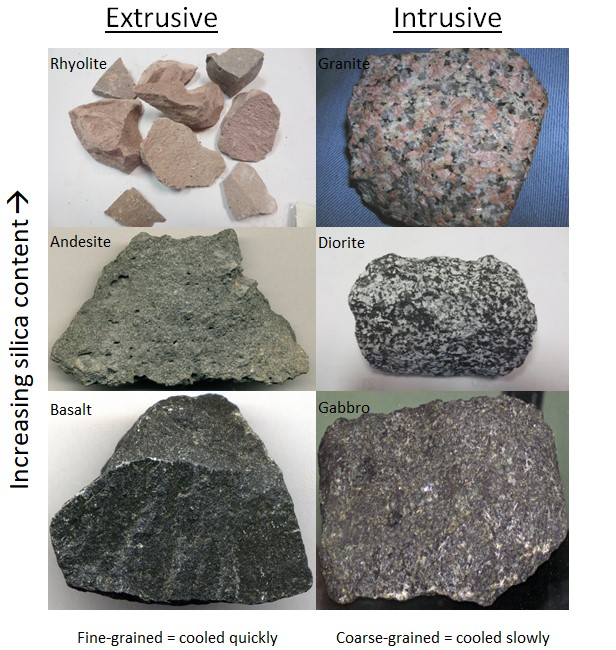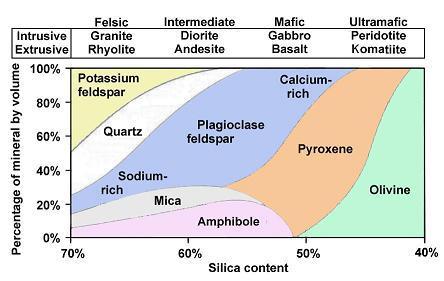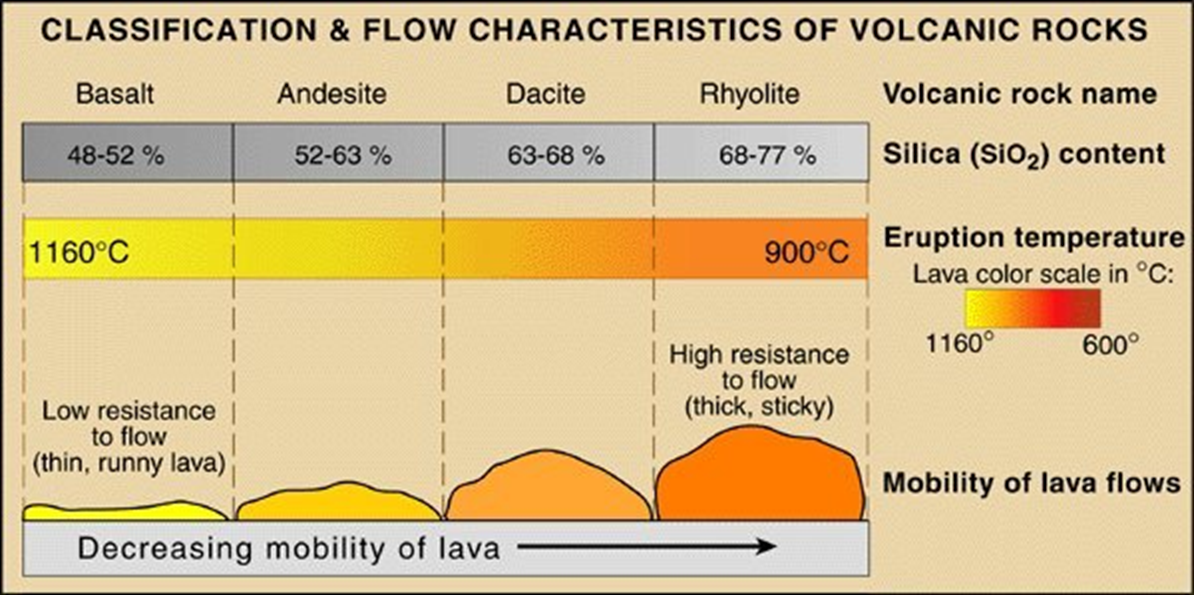Main Body
Chapter 13
Topic 12 – Recycling Rocks
“This planet is essentially a body of crystallized and uncrystallized igneous material. The final philosophy of earth history will therefore be founded on igneous-rock geology.” – Reginald Aldworth Daly, 1914.
Volcanic eruptions are one of the most destructive of all natural hazards. Yet within this destructive potential, we see a significant connection between Earth’s lithosphere and atmosphere.  Chemicals are released, ash and dust are dispersed to high levels, sometimes reaching the stratosphere. Perhaps most importantly, new rocks are solidified from liquid rock as its delivered to the surface. Underground, liquid rock is called magma and at the surface it is referred to as lava. Rocks formed directly from cooled liquid rock are called Igneous rocks, and represent a significant portion of the rock cycle. Where these rocks form from rapidly cooling at or near the surface, they are called extrusive igneous rocks. Where they cool deep underground they are referred to as intrusive igneous rocks. The slower cooling possible in the underground environment generally allows the mineral crystals within intrusive rocks to grow larger than an extrusive rock with the same mineral content.
Chemicals are released, ash and dust are dispersed to high levels, sometimes reaching the stratosphere. Perhaps most importantly, new rocks are solidified from liquid rock as its delivered to the surface. Underground, liquid rock is called magma and at the surface it is referred to as lava. Rocks formed directly from cooled liquid rock are called Igneous rocks, and represent a significant portion of the rock cycle. Where these rocks form from rapidly cooling at or near the surface, they are called extrusive igneous rocks. Where they cool deep underground they are referred to as intrusive igneous rocks. The slower cooling possible in the underground environment generally allows the mineral crystals within intrusive rocks to grow larger than an extrusive rock with the same mineral content.

Volcanic activity occurs when liquid rock makes its way to the Earth’s surface. Much like air masses in the atmosphere, liquid rock moves through Earth’s crust based on density differences with surrounding material. Warmer liquid rock is less dense than the surrounding, cooler crust and as a result tends to rise towards the surface, melting through overlying rocks as it goes. The melting rock mixes with the existing magma and affects the chemistry of the mix, resulting in a unique chemical signature for each centre of volcanic activity. While rising through the lithospheric crust, intense pressure keeps volatile gases dissolved within the magma. When the magma reaches the surface, this pressure is removed and the gases are rapidly released in an explosive eruption. The violence of this explosion is associated with the chemistry of the magma and how easily it flows (viscosity). Generally, magma with higher silica content is higher viscosity (high resistance to flow). Magma with lower silica content is lower viscosity (low resistance to flow).

According to the diagram above, basalt has a low silica content and low viscosity. Basaltic lava is often found in association with volcanic eruptions with low explosivity (effusive eruptions), like those in Hawaii and Iceland. Rhyolite has a high silica content and high viscosity. Rhyolitic rock is often found in incredibly high explosive eruptions like the volcanic centre that underlies Yellowstone volcanic field. In between, andesitic and dacitic volcanoes (like Mount St. Helens in Washington) have explosive behaviour but on a smaller scale.
Magmatic chemistry affects the type of eruption at a volcanic centre and, as a result, the type of landforms generated:

There are many other volcanic landforms that you can explore, and a good summary exists here:
Volcanic activity plays a critical role in the rock cycle, moving magma to the surface where it can solidify and form new rock. It functions in many other critical zone cycles, including mineral cycles like the Phosphorus Cycle, and the Sulphur Cycle, supplying significant nutrients necessary for soil development and plant growth.
molten rock flowing on the surface (itseducation)
Molten magma that extrudes onto the Earth's surface as a result of a volcanic eruption (bgs)
Molten rock that has erupted onto Earth's surface (geology.com)
a rock formed through the cooling of magma or lava (itseducation)
A rock that originated when a molten magma or lava cooled and solidified (bgs)
A rock formed by the crystallization or solidification of molten rock material (geology.com)
Igneous rocks that are erupted from a volcano and crystallize at Earth's surface (geology.com)
igneous rock that cooled at surface (opentext physgeo)
Igneous rocks that crystallize below Earth's surface. They typically have mineral crystals that are large enough to easily see with the unaided eye (geology.com)
an igneous rock that has cooled slowly beneath the surface (opentextbc physgeo)
the resistance of a fluid to flow (geology.com)
how resistant a substance is to a change in form (itseducation)
is the quantity that describes a fluid's resistance to flow (physics handbook)
most common mineral component of rock (itseducation)
a hard, unreactive, colorless compound which occurs as the mineral quartz and as a principal constituent of sandstone and other rocks (google definitions)
is the name given to a group of minerals composed of silicon and oxygen, the two most abundant elements in the earth's crust (EUROSIL)
